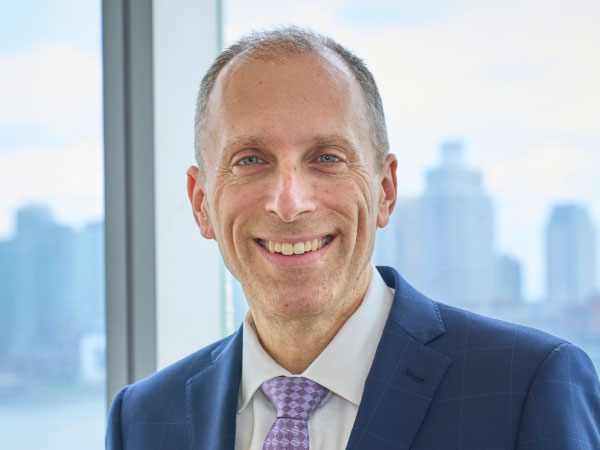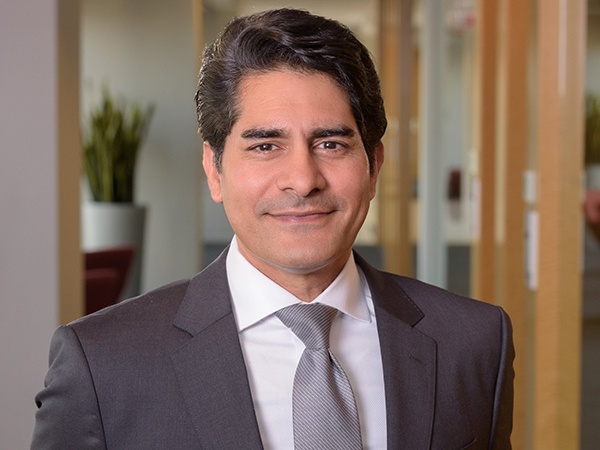Kyle Walsh, a brain tumor expert at the Duke Cancer Institute, was named director of the National Institute of Environmental Health Sciences.


In that role, Walsh will serve as director of the National Toxicology Program, an inter-agency program at HHS that houses the Office of the Report on Carcinogens.
Walsh’s appointment was announced by HHS Secretary Robert F. Kennedy Jr. on Oct. 10, and he will start his job “after completing all required federal onboarding processes,” HHS officials said in a statement.
The appointment was completed despite the government shutdown that started Oct. 1.
The White House, in its budget proposal for fiscal year 2026, sought to cut the NIEHS budget by about 35%, to $594 million, but after Congress rejected Trump’s cuts, the institute is likely to end up with flat funding of $914 million.
“As the NIH’s premier institute for environmental health research, NIEHS has a unique opportunity to improve both individual and population-level health for all Americans,” Walsh said to The Cancer Letter. “Through expanded partnerships with ICs focusing on specific disease states and organ systems, NIEHS will continue to advance knowledge on how best to maintain lifelong wellbeing and prevent chronic illnesses such as cancer, heart disease and dementia.”
Colleagues describe Walsh as a solid scientist, a characterization that would make his appointment consistent with the naming of Anthony G. Letai, a respected cancer researcher to the job of NCI director (The Cancer Letter, Sept. 25, 2025).
“Kyle is a spectacular scientist and molecular epidemiologist. He is a thought leader in our field of environmental health as it relates to brain tumors and cancer in general,” Mitchel Berger, a member of the President’s Cancer Panel, who serves as a professor of neurological surgery and director of the Brain Tumor Center at the University of California, San Francisco, said to The Cancer Letter.
“I was thrilled to recruit him into our Department of Neurosurgery where he was a principal investigator in our Brain Tumor Center. He is superbly qualified to lead the NIEHS in its important missions at NIH,” said Berger, who also served on the Cancer Moonshot Blue Ribbon Panel in 2016.
As the NIH’s premier institute for environmental health research, NIEHS has a unique opportunity to improve both individual and population-level health for all Americans.
Kyle Walsh
Henry Friedman, a colleague at Duke’s Preston Robert Tisch Brain Tumor Center who has published papers with Walsh, describes him as a top-tier scientist.
“Kyle is the leading authority in brain cancer epidemiology and an internationally recognized thought leader in the field of cancer causation research,” Friedman said to The Cancer Letter. “His sterling record of scientific contribution is propelling the field toward more unified approaches for environmental health research by integrating laboratory experiments and ‘omics’ data into epidemiological practice. I mean every word!”
Melissa Bondy, chair of the Department of Epidemiology and Population Health and the associate director for population sciences at the Stanford Cancer Institute, said Walsh, being a cancer expert, could direct NIEHS toward cancer studies, including some that could be conducted in conjunction with NCI.
“Kyle Walsh brings both scientific depth and practical insight to this new role at NIEHS. His expertise in cancer biology and epidemiology is especially timely, as we are entering an era with new tools to understand how genes and the environment interact to influence cancer risk,” said Bondy, who has known Walsh since his grad school days at Yale. “With opportunities for collaboration between NIEHS and NCI on early-onset cancers and other challenges, I am confident that Kyle’s leadership and vision will help catalyze meaningful progress and impact in the field.”
At Duke, Walsh was an associate professor of neurosurgery and pathology, director of the Division of Neuro-epidemiology, and a senior fellow in the Duke Center for the Study of Aging and Human Development. Also, he led Duke’s Neuro-epidemiology Lab.
According to his profile, the lab “integrates bench science with statistical methods to study the neurobiology of glial senescence and gliomagenesis. This research interrogates human genomic and epigenomic profiles to identify both heritable and modifiable factors that contribute to neurologic and physical decline, applying these approaches to studying the shared neurobiology of cognition, glial senescence, and gliomagenesis. The lab has a long history studying telomere maintenance in pre-malignant cells and its role in the development of cancer, most notably glioblastoma.”
Kyle Walsh brings both scientific depth and practical insight to this new role at NIEHS. His expertise in cancer biology and epidemiology is especially timely, as we are entering an era with new tools to understand how genes and the environment interact to influence cancer risk.
Melissa Bondy
The links between chemical exposures and cancer tend to be politicized in ways that don’t coincide with national politics, and shoddy science can come from the political right, left, and center. Two years ago, in a guest editorial in this publication, Walsh and Friedman criticized the methodologies and conclusions in Philadelphia Inquirer stories making the claim that chemicals contained in astroturf had caused six Philadelphia Phillies players to develop GBM (The Cancer Letter, Sept. 15, 2023; Sept. 27, 2023).
At NIEHS, Walsh succeeds Rick Woychik, who has been the NIEHS director since 2020, and who has moved on to the NIH Office of the Director to focus on what the administration calls the Make America Healthy Again initiatives.
Walsh is a close friend of Vice President J.D. Vance.
They met at Yale, where Walsh was working on his PhD and Vance was attending law school. Both men are from Ohio. According to an interview, Vance had officiated at Walsh’s wedding and at one point shared an apartment with Walsh and his wife in San Francisco. Vance’s book, “Hillbilly Elegy,” includes Walsh’s copyedits.
Later, Walsh advised Vance’s Senate office in studying the aftermath of the 2023 train derailment in East Palestine, OH.
More recently, on a visit to Washington, Walsh and his wife Rabina Walsh, a pediatric dermatologist at Duke’s health system, joined the Vances at the Kennedy Center for the National Symphony Orchestra’s performance of Shostakovich’s Violin Concerto No. 2 and Stravinsky’s Petrushka.
As the Vances and Walshes entered the box, the audience—presumably infuriated by DOGE-ordered RIFs and President Trump’s decision to become the chairman of the board of Kennedy Center—broke into spirited booing.
With luck, as director of NIEHS, Walsh will get a more approving reaction. But that, of course, will have to be earned.








